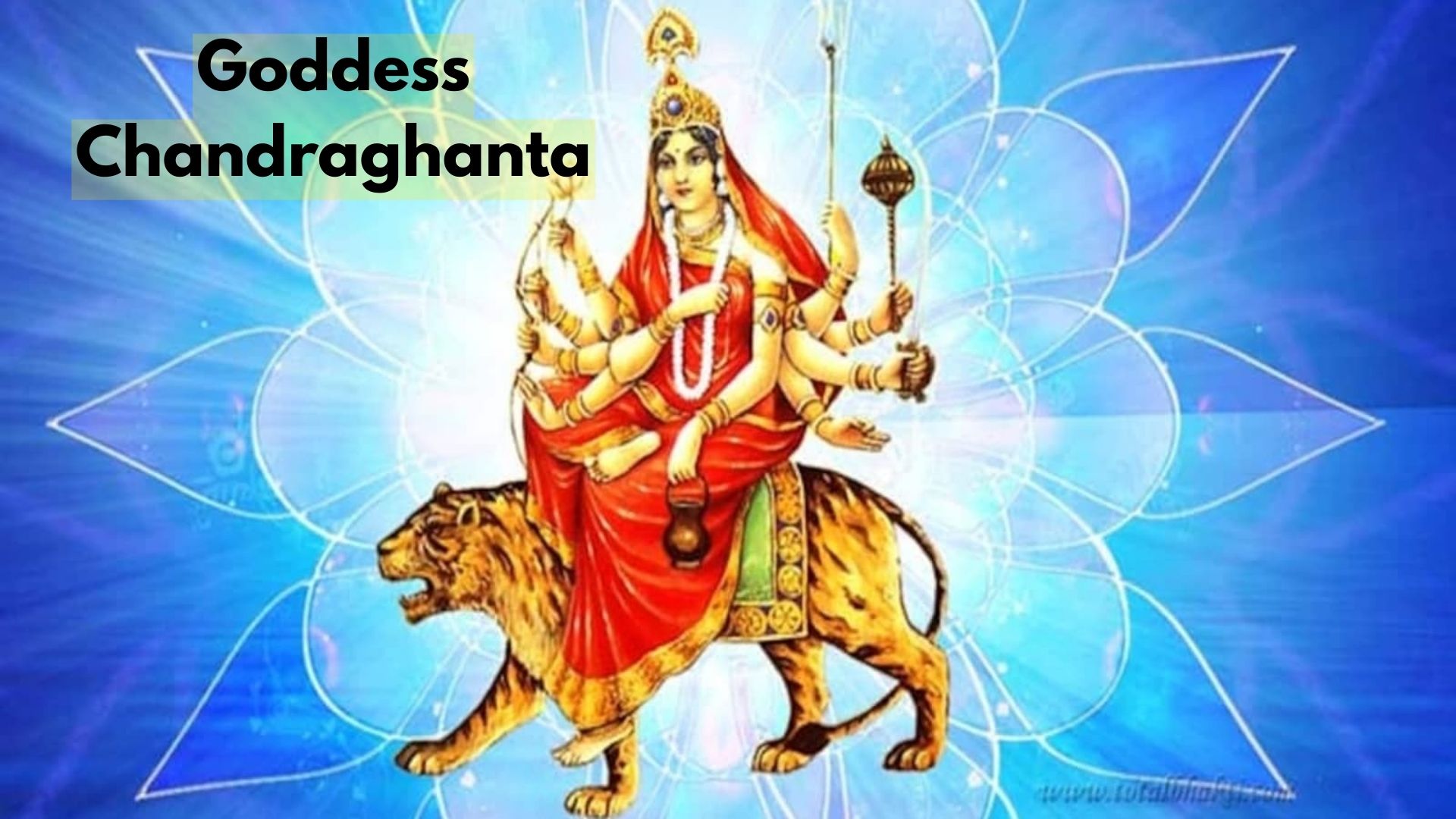
Worship of Goddess Chandraghanta on the Third Day of Navaratri
On the third day of Bada Dashain and Navaratri, Goddess Chandraghanta, the third among the nine forms of Goddess Durga, is worshipped with proper rituals in the Dashain house or the puja room.
According to various ancient texts and scriptures, she is named Chandraghanta because she holds a bell (ghanta) with a crescent moon (chandra) on it. Worship of this goddess is believed to grant strength and energy, which is why special prayers and rituals are performed during Navaratri, explained Toyaraj Nepal, former professor of religious studies at Nepal Sanskrit University.
Description of Goddess Chandraghanta
The Markandeya Purana mentions, “Chandrah Ghantayam Yasyah Sa,” meaning “the one whose bell bears the moon is Chandraghanta.” Her image depicts a crescent moon on her forehead along with a bell, which is why she is called Chandraghanta.
Goddess Chandraghanta is described as having a golden-yellow complexion. She is believed to destroy demonic and tyrannical forces. On this day, devotees meditate on the Manipura Chakra while worshipping her. It is believed that meditating on her form grants immense spiritual power.
According to Chintamani Bhattarai, Associate Professor at Valmiki Vidyapeeth, receiving the blessings of Goddess Chandraghanta destroys all sins. She is known for her calm, compassionate, and gentle nature. People associated with music and the arts particularly worship her for inspiration. Devotees also believe that meditating on her today brings a radiant glow to the forehead.
Rituals and Sequence of Worship
On the first day of Navaratri, Ghatasthapana is performed in the Dashain house or puja room according to Vedic rituals, and barley seeds are sown for Jamara. According to scriptures such as Shrimad Devi Bhagavatam, Ghatasthapana symbolizes invoking the presence of the goddess.
On the same day, devotees invoke and worship Shailaputri, the first of the Navadurga. On the second day, they worship Brahmacharini. Today, on the third day, Chandraghanta is worshipped with devotion.
During the nine days of Navaratri, devotees recite texts such as Durga Saptashati (Chandi), Shrimad Devi Bhagavatam, and other hymns. It is believed that worshipping Goddess Durga during Navaratri bestows strength, prosperity, and wisdom.
The offerings (prasada) from the nine days of worship are consumed from Vijayadashami until Kojagrat Purnima, making Dashain a fifteen-day-long festival.
The Nine Forms of Goddess Durga
The nine days of Dashain, also called Durga Paksha, are dedicated to the nine forms of Goddess Durga:
-
Day 1 – Shailaputri
-
Day 2 – Brahmacharini
-
Day 3 – Chandraghanta
-
Day 4 – Kushmanda
-
Day 5 – Skandamata
-
Day 6 – Katyayani
-
Day 7 – Kalaratri
-
Day 8 – Mahagauri
-
Day 9 – Siddhidatri
Collectively, these nine forms are known as Navadurga.
Devotees and Celebrations
During Navaratri, there is a large influx of devotees at Shakti Peethas across the country to perform worship and receive blessings. Apart from Dashain, devotees also visit temples in large numbers on Wednesdays, Thursdays, Fridays, and Saturdays for special prayers to the goddess.
Festival Culture

